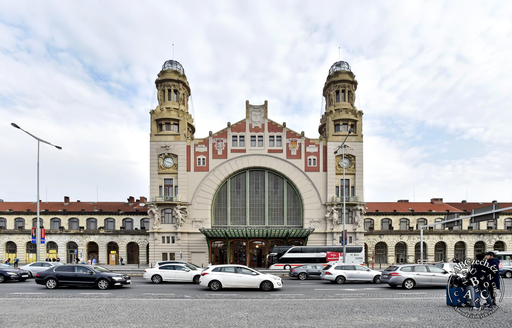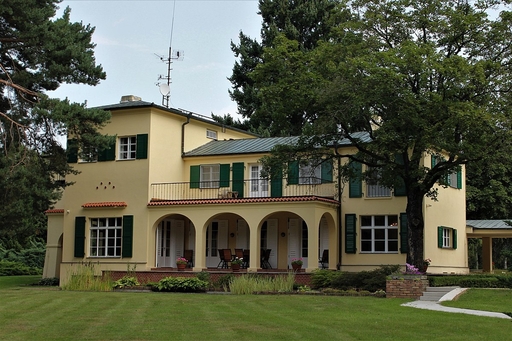
Original Art Nouveau railway station building with unique exterior and interior decorations. The structure, which had a hall above the tracks, was built according to the high standards of modern architecture of the time.

Experimental complex of residential buildings, intended as an embodiment of the ideal of modern living standards, containing all the facilities in one building.

Complex of the former medieval convent in Prague, also called “Na Františku”, in which one of the oldest Gothic buildings in Bohemia is located. It was one of the most important Czech convents in the era of the kings from the Přemyslid dynasty.

Buildings that are used for cremation. They appeared in the late 19th century. The facilities were very well accepted in the Czech lands and cremation became a common method of burial.

The economically purposeful and aesthetic landscape of the 17th and 18th centuries defined the current character of the Czech landscape. It is characterised by long fields, a dense network of roads, small sacred buildings in the country and a large number of Baroque churches.

Czech functionalist architect known primarily for the new design of the tower of Emmaus Monastery.

Castle converted into a chateau, one of the dominating features of the town of Český Krumlov, inscribed on the UNESCO list of World Cultural Heritage. After Prague Castle, it is the second largest castle complex in the Czech Republic and one of the most visited monuments in the country.

A castle converted into a chateau, located on the bank of the river Sázava, in the Central Bohemian Region. It is the only seat in Bohemia that has been used by the same noble family since the Middle Ages.

The first post-revolution building by a world-famous architect, named after its two corner towers resembling a dancing couple. The building became one of the symbols of Prague and an important tourist attraction.

Important avant-garde association of writers, theoreticians, architects, theatre artists and fine artists. It organised different cultural events, mostly in the spirit of left-wing politics.

Czech builder and architect of German descent, the most famous figure of Czech Baroque architecture. His work is of exceptional artistic quality and unusually prolific.

Late Baroque chateau in the eponymous town in the Central Bohemian Region. It is one of the few examples of chateau architecture in Bohemia that were inspired by the magnificent French models.

Czech architect of the first half of the 20th century, author of the Great Strahov Stadium, sports venue with the largest area in the world.

Museum whose unique building was designed by architect Jan Kotěra. It was designed in modernist style with elements of Art Nouveau. It is one of the landmarks of the city and a cultural monument of the Czech Republic.

A representative country villa from the 1930s, built in Sezimovo Ústí by Czechoslovak president Edvard Beneš and his wife Hana. The area contains a large garden and a villa with the original interior.

Benedictine monastery, founded by Charles IV in Prague’s New Town. It became famous primarily as the centre of Slavonic education and art, and is also one of the prime examples of art of the era of Charles IV.

Czech architect, city planner and university teacher working in the first half of the 20th century. Author of designs for the Podolí waterworks, the Victory Square and university buildings in the Dejvice district of Prague.

One of the most famous world exhibitions and the first large exhibition organised after the Second World War, which attracted a lot of artists and visitors from all over the world and brought Czechoslovakia great recognition and many awards.

The pavilion of the restaurant built for EXPO 58 in Brussels. It became a symbol of the maturity of post-war Czechoslovak architecture and one of the most visible Prague buildings since its construction in the Letná Park.

Czech architect, interior designer, teacher and one of the most important representatives of Czech Art Nouveau.
2016-2020 ABCzech.cz - © Filozofická fakulta Univerzity Karlovy
Content from this website may be used without permission only for personal and non-commercial purposes and with the source cited. Any other use is allowed only with the authors' consent.
This web application Sonic.cgi meets GDPR requirements. Current information can be found here.